<-Piggies – Don’t Pass Me By->
‘Rocky Raccoon’ was mainly written by Paul McCartney, apparently sitting on a roof in India, although John Lennon and Scottish singer-songwriter Donovan also made contributions to the initial lyric when he got stuck. However there is nothing remotely Indian about the song, which could perhaps best be described as a folk rock ballad, based on North American folk and bluegrass music
The title was originally ‘Rocky Sassoon’ (as in Vidal Sassoon, the famous hairdresser of the time) but McCartney changed it to ‘Rocky Raccoon’ because he thought “it sounded more like a cowboy”. A raccoon is a dextrous medium-sized mammal, native to North America. ‘Coonskin’ hats were originally traditional native American caps that became very popular with American and Canadian frontiersmen, such as Davy Crockett, of the 18th and 19th Centuries. McCartney would have probably been familiar with these as a result of the extensive UK marketing campaign launched by Disney in 1955/6 to publicise the film ‘Davy Crockett, King of the Wild Frontier’. In the 1950s, cowboy ’Westerns’ as they were known, were very popular and frequently shown cinema and TV films.
It has been suggested that the name ‘Rocky’ was inspired by Roky Erikson the American psychedelic ‘13th Floor Elevator’’s vocalist and guitarist. However it seems equally possible that McCartney might have been familiar with the animated ‘Rocky and Bullwinkle’ TV cartoon shows of the early 1960s, known for their quality writing and wry, often self-referential humour, mixing puns, cultural and topical satire – although Rocky is a flying squirrel and he and Bullwinkle J Moose live in the fictional town of Frostbite Falls in Minnesota. In Paul’s original version, Rocky Raccoon comes from Minnesota, though this was subsequently changed to Dakota.
But maybe ‘Rocky’ is just a great multi-meaning name to choose as it describes Rocky’s ‘rocky’ up and down relationship with Lil, and ‘Rocky Raccoon’ is, of course, a folk-‘rock’ song. “There are some names I use to amuse, Vera, Chuck and Dave or Nancy and Lil, and there are some I mean to be serious, like Eleanor Rigby, which are a little harder because they have to not be joke names. In this case Rocky Raccoon is some bloke in a raccoon hat, like Davy Crockett.”
Paul McCartney in Barry Miles’ ‘Many Years From Now’.
Essentially Rocky Raccoon is a a jokey song about a cuckolded young American man seeking revenge against a love rival, but finding salvation in religion. “Rocky Raccoon is quirky, very me. I like talking blues so I started off like that, then I did my tongue-in-cheek parody of a western and threw in some amusing lines. I just tried to keep it amusing, really; it’s me writing a play, a little one-act play giving them most of the dialogue.”
Paul McCartney in Barry Miles’ ‘Many Years From Now’.
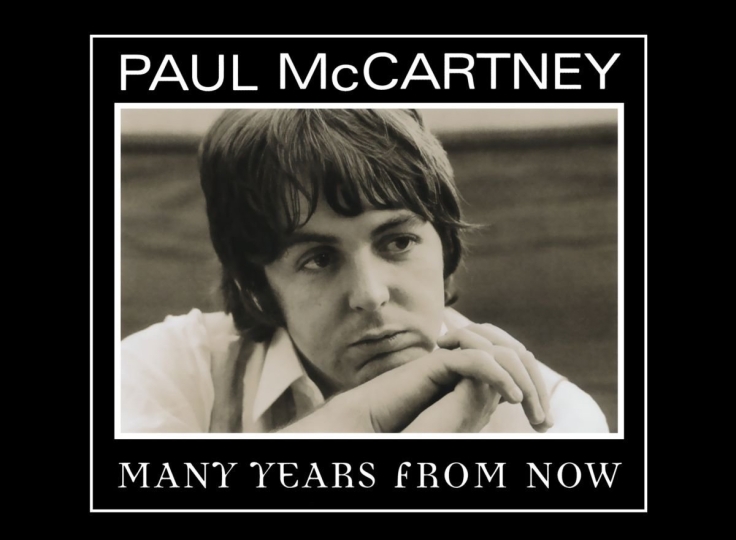
Paul once described the song as “a Mack Sennett movie set to music.” Mack Sennett was an innovator of slapstick comedy. He may also have had in mind the well-known poem: ‘The Shooting Of Dan McGrew’ by Robert W Service which involves a love triangle, a gunfight, a character named “Dangerous Dan McGrew” and the “the lady that’s known as Lou”. The third and fourth lines of the poem read:
‘Back of the bar, in a solo game, sat Dangerous Dan McGrew,
And watching his luck was his light-o’-love, the lady that’s known as Lou.’
Another influence on McCartney might just have been the Doris Day song “The Black Hills of South Dakota” from the 1953 movie Calamity Jane – the first line of Rocky Racoon being ‘Now somewhere in the Black Mountain Hills of Dakota’ Paul has also described the way in which he worked on the song:
“These kind of things – you can’t really talk about how they come ’cause they just come into your head, you know. They really do! And it’s like John writing his books. There’s no…I don’t know how he does it, and he doesn’t know how he does it, but he just writes. I think people who actually do create and write…you tend to think, ‘Oh, how did he do that,’ but it actually does flow…just flows from into their head, into their hand, and they write it down, you know. And that’s what happened with this. I don’t know anything about the Appalachian mountains or cowboys and Indians or anything. But I just made it up, you know”.
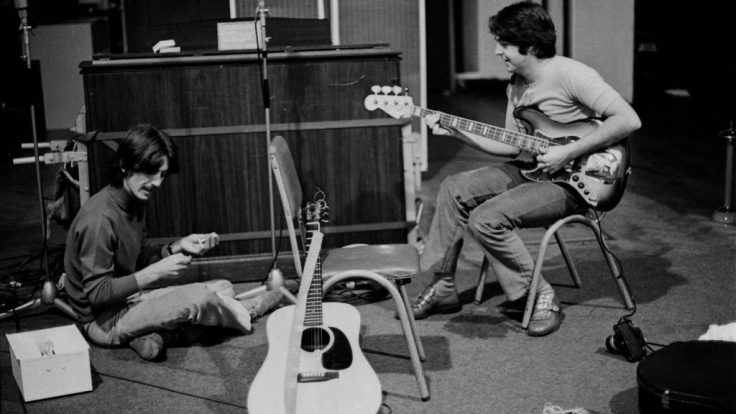
The Beatles recorded ‘Rocky Raccoon’ during a single session on 15 August 1968 – around half-way through the recording sessions for the album – with McCartney on vocals and acoustic guitar, Starr on drums and unusually Lennon on six-string bass. George Martin played the honky-tonk piano solo, and Lennon, McCartney and Harrison contributed backing vocals. Apparently it was difficult to record as it all had to be done all in one take as it would have been very hard to edit. Additional bass and drum parts, along with John’s harmonica, the harmonium, George Martin’s Honkey Tonk piano and the backing vocals were finally added to the 8th or 9th take. ‘Rocky Raccoon’ is also the last Beatles song to feature John Lennon’s harmonica playing.
Musically ‘Rocky Raccoon’ develops gradually, from Paul’s solo acoustic guitar added to by Ringo’s initially light high-hat and Lennon’s bass, building up to the lively bridge. While the structure is very straight-forward – verse / chorus / verse / chorus etc., and the chord pattern is also simple and repetitive, the verses vary in length according to the demands of the story, rather than dictating a fixed number of lines.
The song begins with an unaccompanied acoustic guitar with Paul’s semi-spoken explanation of who Rocky is.
Verse 1
Now somewhere in the Black Mountain Hills of Dakota
There lived a young boy named Rocky Raccoon
And one day his woman ran off with another guy
Hit young Rocky in the eye
Rocky didn’t like that
He said, “I’m gonna get that boy”
So one day he walked into town
Booked himself a room in the local saloon
In line 1, the “Black Mountain Hills of Dakota” are the Black Hills of South Dakota, a mountain range that gets its name because the hills are covered by dark trees. In the 18th and 19th centuries there were long running ‘feuds’ between native Indians and whites in the region, and land ownership is still in dispute to this day.
There was an original version of this verse that went:
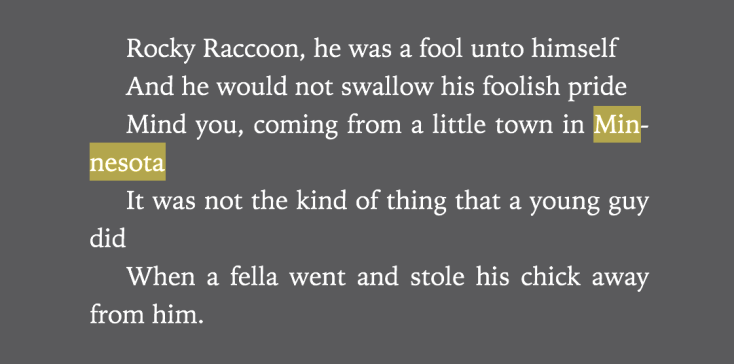
Verse 2
Rocky Raccoon checked into his room
Only to find Gideon’s Bible
Rocky had come, equipped with a gun
To shoot off the legs of his rival
His rival it seems, had broken his dreams
By stealing the girl of his fancy
Her name was Magill, and she called herself Lil
But everyone knew her as Nancy
Now she and her man, who called himself Dan
Were in the next room at the hoe down
Rocky burst in, and grinning a grin
He said, “Danny boy, this is a showdown”
But Daniel was hot, he drew first and shot
And Rocky collapsed in the corner
Particularly in America, Gideon’s Bibles are often found in a drawer in a hotel or motel room. They are distributed by Gideon International, an evangelical Christian organization dedicated to publishing the Bible in over 94 languages and 194 countries worldwide. Rocky’s girl’s name was Magill, but, while she called herself Lil for short, she also used the name Nancy as a pseudonym, possibly because she had many lovers and wanted to keep her real name secret. More likely though it was simply her ’stage’ name. ‘Lil’, which rhymes with Magill, could be short for Lily, or for ‘Little’, i.e., her full name might have been ‘Little Nancy Magill’. Here Paul is parodying the complex use of aliases often found in Western films.
The words ‘hoe down’ – an American folk dancing event – rhymes well with ‘show-down’ – a popular term for a gun-fight in Westerns. However it perhaps seems strange the hoedown is happening ‘in the next room’ and that Rocky would ‘burst in’ so just possibly in this context hoe down is a euphemism for ‘making love’? ‘Danny boy’ is just possibly a reference to the title of a classic Irish folk song of the same title.
During this verse the musical accompaniment gradually builds. Note Ringo’s harder beat just after the penultimate line that represents Dan’s shot.
The musical bridge ups the tempo with McCartney singing along in a wordless tune to George Martin’s ‘Honky Tonk’ saloon bar accompaniment, leading straight in to the next verse.
Verse 3
Now the doctor came in, stinking of gin
And proceeded to lie on the table
He said, “Rocky, you met your match”
And Rocky said, “Doc, it’s only a scratch
And I’ll be better, I’ll be better, Doc, as soon as I am able”
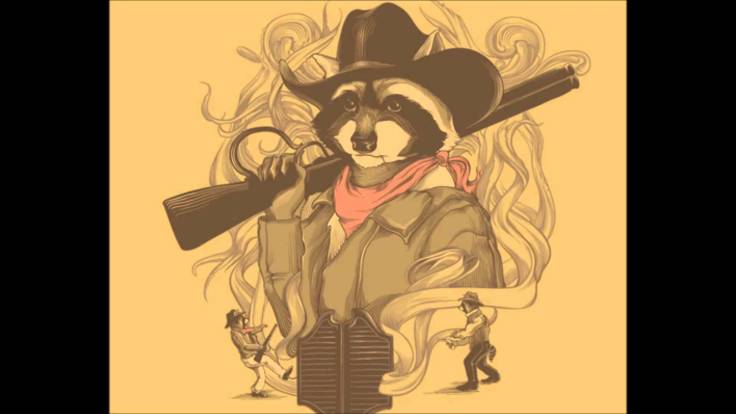
McCartney probably got the idea for the drunken doctor from personal experience. In his book, ‘A Hard Day’s Write’, Steve Turner quotes from Margo Bird of Apple Records:
“Paul had a moped which he came off one day in May 1966. He was a bit stoned at the time and cut his mouth and chipped his tooth. The doctor that came to treat him was stinking of gin and didn’t make a very good job of the stitching which is why Paul had a nasty lump on his lip for a while.”
The last line can be read in two ways – first in terms of his physical and mental health and secondly in his gun-shooting ability to deal with Dan. A few people have commented that they always thought the last line was: “I’ll be better, doc, as soon as I am Mabel”!
An accordion-like harmonium adds to the background musical mix.
Verse 4
Now Rocky Raccoon, he fell back in his room
Only to find Gideon’s Bible
Gideon checked out, and he left it, no doubt
To help with good Rocky’s revival
After having initially noticed the Gideon’s Bible on his arrival, the suggestion is that now it will help his recovery from both his injury and broken heart, and that religion had been there all along. There is also the joke that it was left behind by someone actually called Gideon. However, there are also some interesting multiple meanings: to ‘check out’ can mean to leave a hotel and pay the bill, but also to look in and see if everything is okay. ‘Revival’ refers to Rocky becoming physical and spiritually strong again, but at the same time what are known as ‘Religious Revival Meetings’ take place in America in an attempt to both to bring religion back into fashion and to gain new conversions. In the mid 1960’s there was also the popular American ‘folk music revival’.
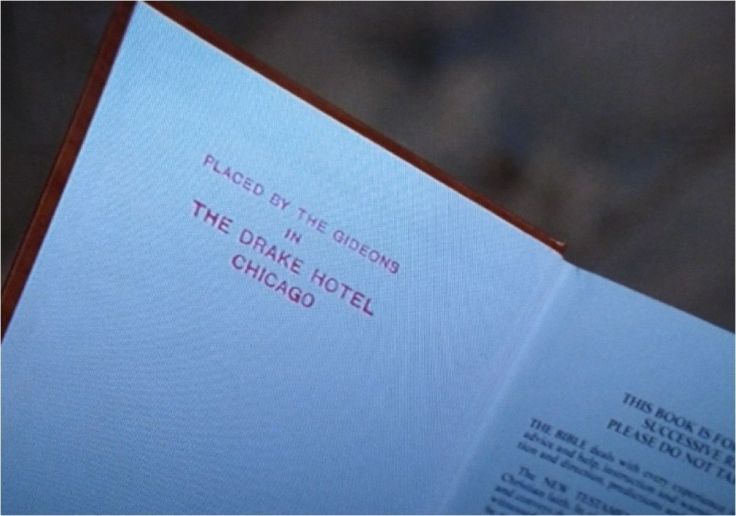
Paul has commented: “I like the idea of Gideon being a character. You get the meaning, and at the same time get in a poke at it. All in good fun.” However, it’s not quite clear exactly what he was actually poking fun at. It has been suggested that Linda Eastman’s voice can be heard on the somewhat ‘heavenly choir’ harmonies that begin half way through the final verse. This perhaps seems unlikely as she did not move to London until the end of September 1968 – although it is of course possible she might have been on a ‘visit’ from America at the time.
The track ends with a further rendition of the bridge that leads into the short segue before ‘Don’t Pass Me By’, which is also accompanied by a folksy American bluegrass violin. So the song is over, but there is one further interesting question to consider. Bob Dylan and the Beatles saw themselves as musical rivals, though they influenced each other. Some have suggested that ‘Rocky Raccoon’ is an attempt to satirise Dylan and the musical adjustment to religious themes he explored in his semi-acoustic ‘John Wesley Harding’ album of 1967 that drew on American folk-music and the Bible. The real ‘John Wesley Hardin’ was a Texas Outlaw. Furthermore, like Rocky in the original first verse, Dylan was born in ‘a little town in Minnesota’, and at the time his hair-style could be described as looking a little like an unkempt mammal! In 1966 he had had a relatively minor motorcycle accident, from which he duly recovered. We shall doubtless never know if that’s what Paul consciously intended, so the answer will surely remain ‘blowing in the wind’…
Now ‘Rocky Raccoon’ happens to be the first Paul McCartney-led song I’ve written about for ‘Whiter than the Beatles’, and perhaps there’s a reason for that. Up to and including ‘The Magical Mystery Tour’ I had been a big fan of the more McCartney-based songs, including such classics as ‘Yesterday’, ‘Eleanor Rigby’, ‘For No-one’ and even ‘When I’m 64’. But the Beatles’ White Album marks the point that, for me, his work starts to become too often over-sentimentalised and lacking that sense of lyrical sharpness and creativity, despite the formidable quality of the music and studio recording itself. I’m not saying his later compositions are not good, just that they appeal to me less.
But it’s not just McCartney who seems to be beginning to stop asking ‘What if…?’ on some (but by no means all) of the White Album tracks and ceasing to explore the possibilities – the rest of the Beatles, and indeed many other bands who flourished in the mid 1960s, would soon follow. Their choice, with just a few notable exceptions, would be to continue to come up with endless variations of the musical territories they had established. During the 1970s most bands added an ‘r’ to become ‘brands’ that reliably delivered risk-free products that embodied familiar musical formats, values and personalities.
With John now committed to his close relationship with Yoko and Paul’s to Linda, John and Paul were no longer each other’s critical best friends. Somehow McCartney without Lennon – and Lennon without McCartney – is like:
Fish without Chips
Sam without Dave
Bonnie without Clyde
Laurel without Hardy
Eric without Ernie
Adam without Eve.
However, the White Album is not, as some people remark, ‘The sound of the Beatles splitting up’, it’s the sound of The Beatles reaching the absolute pinnacle of their creative potential.
Tristram, 14th October
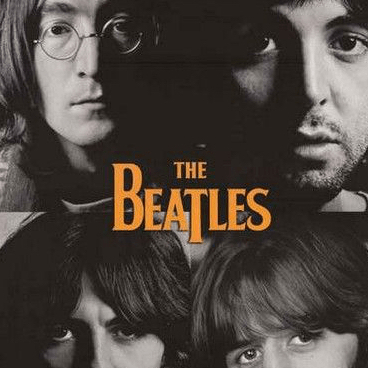

I thought Rocky Racoon was inspired by the Firesign theater Nick Danger album.
They had a villain named Rocky Roccoco.
Also a lady with many names:
“mentions a woman with many names, including Betty Jo Bialosky.
Nick recognizes that last name as an old college sweetheart (but everyone knew her as Nancy”), ”
Source:
https://tvtropes.org/pmwiki/pmwiki.php/AudioPlay/TheFurtherAdventuresOfNickDanger
LikeLike